ByFusion ByBlock made with marine debris and fishing nets from Kauai, Hawaii
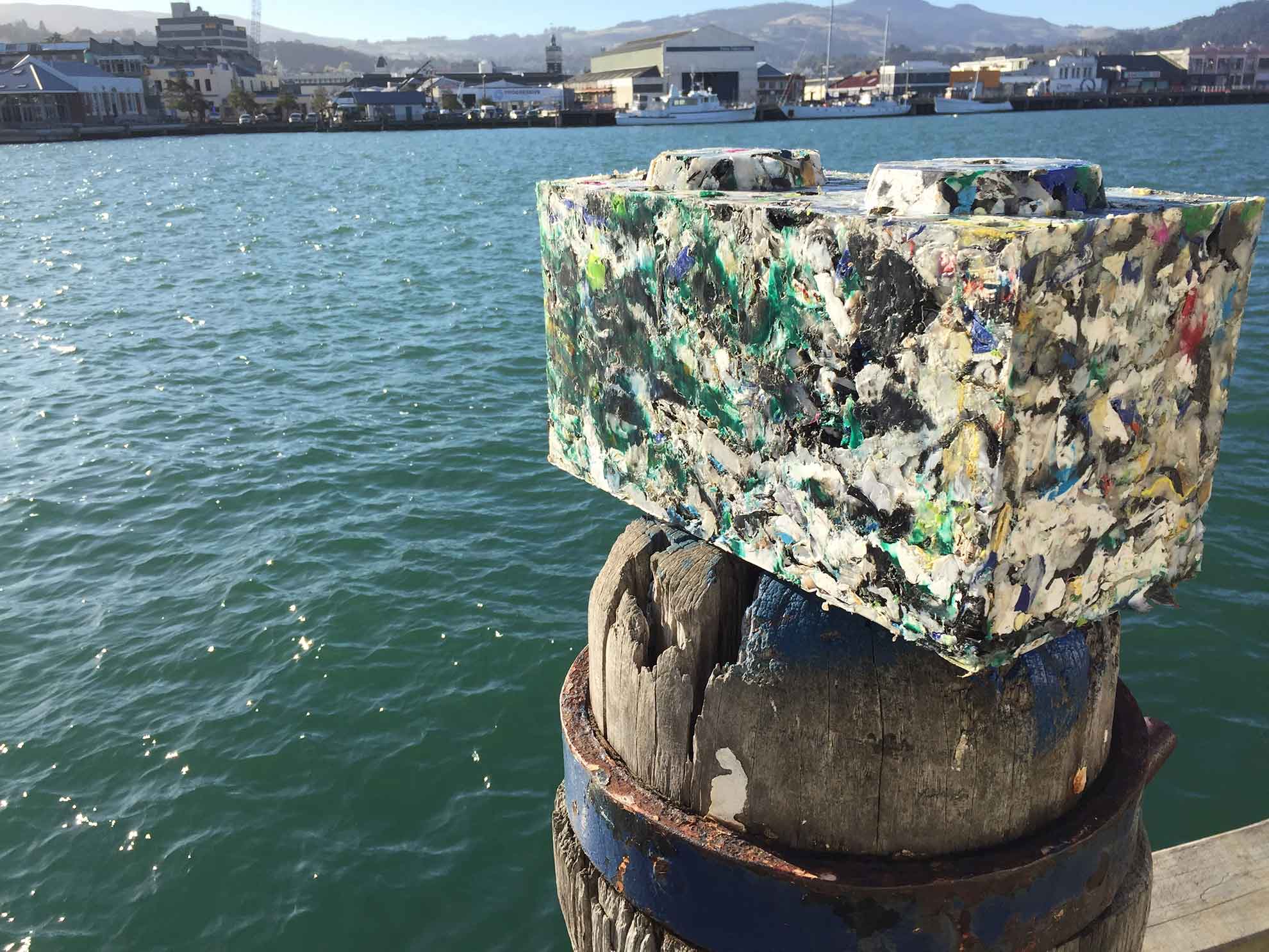
ByFusion ByBlock made with marine debris and fishing nets from Kauai, Hawaii
There isn’t a day that goes by that we don’t hear about plastic and the damage it is doing to our oceans and communities. Plastic waste can be found in just about every corner of society, whether it’s from our blatant disregard, leaked during transit, or natural disasters that wash our waste out to sea.¹ Studies have found that approximately 9 million tons of plastic enters our oceans each year, significantly impacting sea life and coastal communities.²
ByFusion is committed to eliminating the burdens of plastic waste by reshaping its future and putting it to work. Our zero-waste system called the Blocker, converts any kind of plastic waste, including marine debris and fishing nets, into a construction-grade, multi-purpose building material called ByBlock. Blockers divert plastic waste from landfills, incinerators, and oceans empowering communities to take control of their own waste and convert it to a new, sustainable purposeful second life that can be used to support local building projects– this is something evolutionary.
Closing the Loop: From Marine Debris to an Athletic Pavilion
The beautiful beaches of Hawaii and surrounding oceans are not immune from the scourge of plastic waste. Below is the story of a school, a nonprofit, and ByFusion coming together to take trash and turn it into treasure for a small island community.
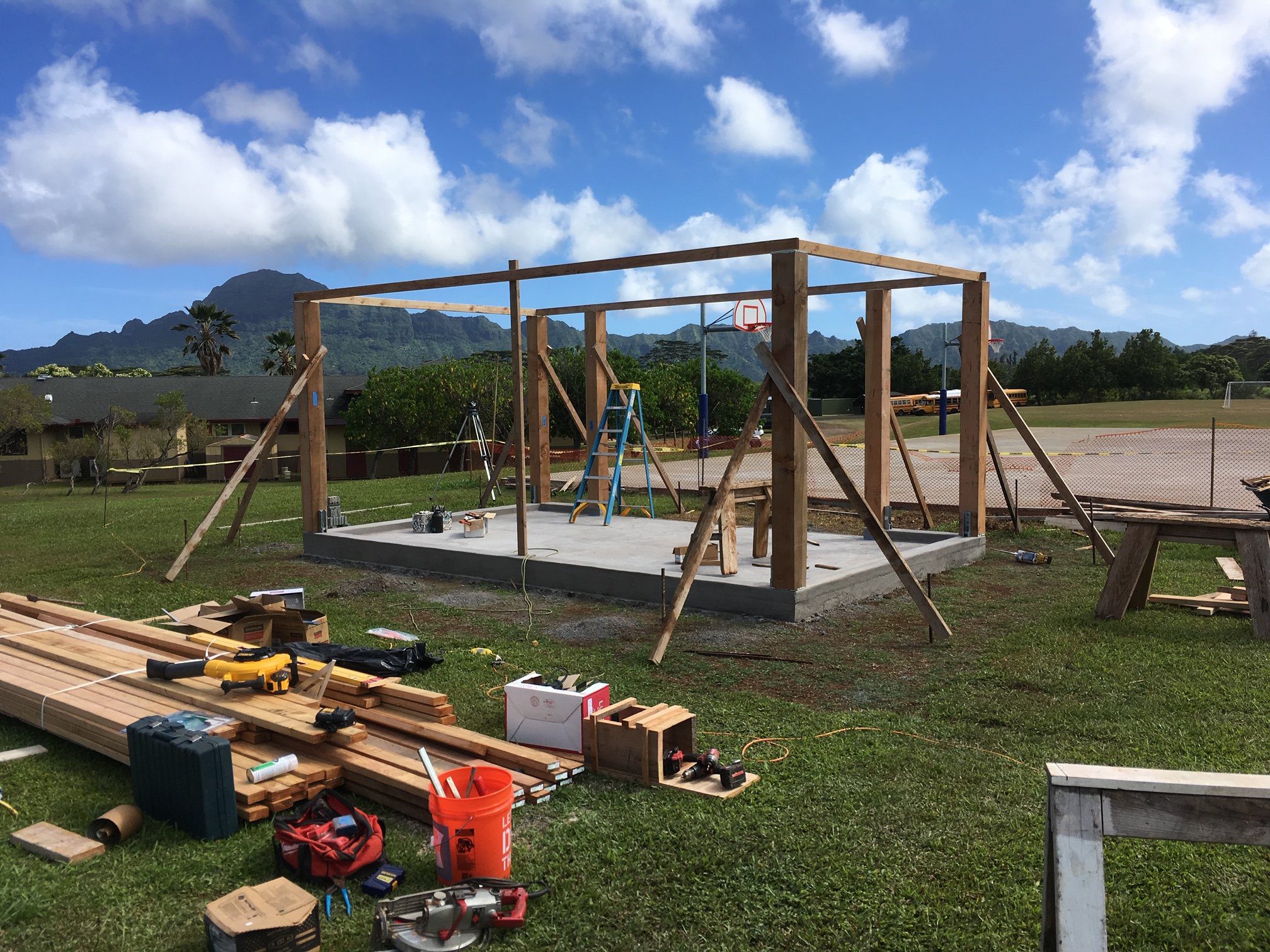
In the Summer of 2019, we travelled to the island community of Lihue, Kauai to build an athletic pavilion on the grounds of Island School, using ByBlock in conjunction with standard building materials including threaded rod, hardware and lumber, and concrete slab.
Building Partnerships
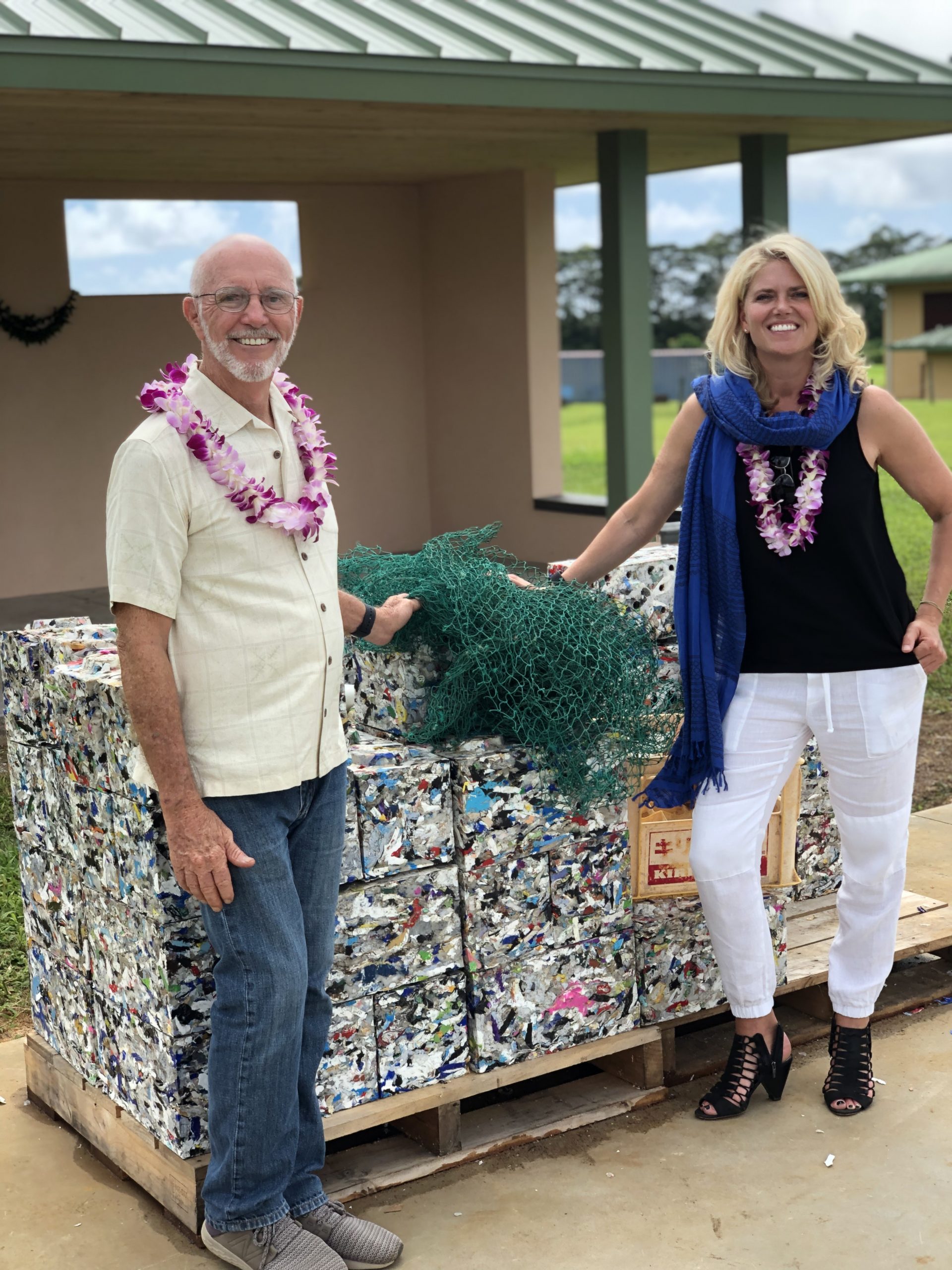
In April 2017, Rob Brower reached out to ByFusion and described the challenges the island of Kauai, Hawaii was facing due to marine debris. Rob is a 45-year veteran surfer and diver who serves on the board of Surfrider Foundation– Kauai Chapter as well a luxury home builder with an emphasis on sustainability. Since then, Rob’s commitment to protecting our oceans accelerated our marine debris research when he introduced us to Surfrider Kauai’s Senior Scientist, Dr. Carl Berg.
A few years and Blocker generations later, ByFusion reached a big milestone and successfully produced the world’s first construction-grade ByBlock made of plastic marine debris and abandoned fishing nets. While we were busy in the Innovation Lab, Dr. Berg and Rob Brower were scouring Kauai in search of the ideal construction project for these new ByBlocks when they learned Island School in Lihue, Kauai needed a new athletic pavilion.
Dr. Berg enlisted the help of Schmidt Marine Technology to help fund the project and Rob’s construction company, Brower Construction, tapped his network of industry specialists including; Architects Kauai, Island Truss, Kick Ass Concrete, Mahelona Sheet Metal Fabrication, and Pacific Plaster & Stucco and got to work building a valuable new structure for local students to enjoy.
Heidi Kujawa, ByFusion CEO, shared how invaluable these two have been to ByFusion’s success, noting that “Rob and Dr. Berg have become a part of ByFusion’s family. Their support over the years has enabled us to achieve several major milestones. We are forever grateful for their contributions and looking forward to continuing to partner with them on many more projects.”
Designing a Custom ByBlock From Kauai, For Kauai
The ByFusion Blocker is the only machine which can process nearly all forms of plastic marine debris, without the need for intense cleaning and sorting. Each ByBlock, while streamline in function, is unique to the plastic waste recovered from that particular community.
In this case, to create the athletic pavilion using ByBlocks– volunteers first collected marine debris on the local beaches of Kauai. This was then mixed with a collection of post-consumer waste, which we call “pre-marine debris”. We coined this term due to the fact that most plastic waste starts out as post-consumer waste before making its way into our oceans.
Testing was then employed to identify the highest ratio of marine debris to plastic waste that would result in a ByBlock meeting ByFusion quality standards.
Ease of Building with ByBlock
Along with the environmental benefits of the Blocker and ByBlock, they are also incredibly effective and easy to use for construction projects. According to Rob, who served as the general contractor, “The ByBlocks went up fast and easy. When you see how the finished product looks, it’s clear that ByBlock is a great way to give plastic waste a responsible end use. They seem to have great R value and sound proofing qualities.”³ Because the ByBlock is lightweight and user friendly, anyone from a skilled contractor like Rob, to the average handy-person can build with them, achieving high level construction results.
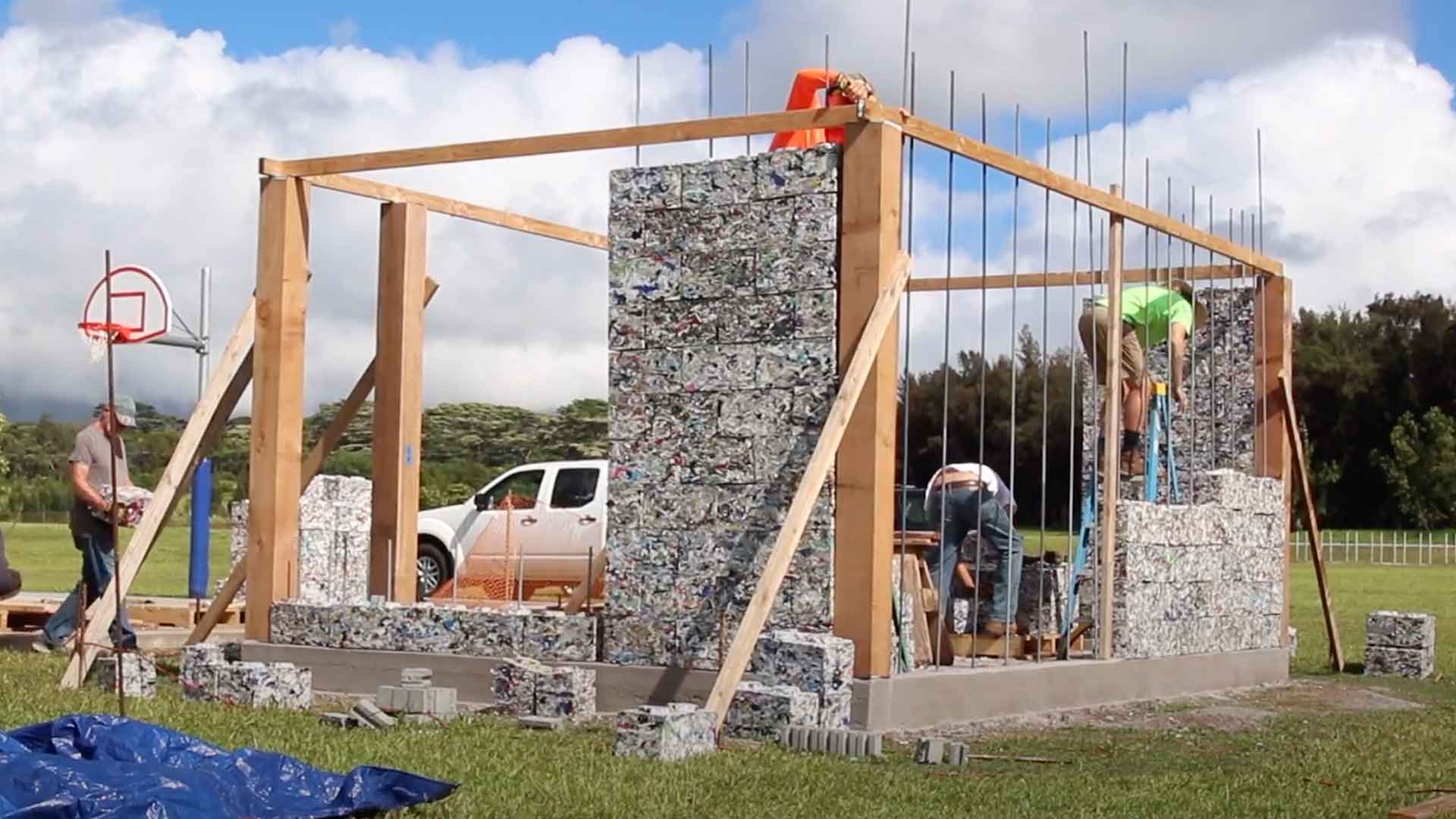
Dr. Berg and Rob’s crew took only a day to stack the blocks that formed the walls of the pavilion.
Once seasoned builders get their hands on ByBlock, they are often eager to talk about the possibilities for future projects. Michael Kujawa, ByFusion VP Product Development, witnessed this first hand during the Hawaii project with Rob Brower and his team, “After we began stacking the wall and cutting ByBlock, Rob and his team’s imaginations started thinking of all the different ways they could use ByBlock. This is a typical reaction and it’s energizing to be a part of those brainstorming sessions during the build and witness the excitement of discovery.” With contractors building with ByBlock and community members collecting plastic waste, this project brought together a unique set of people, working together to better their home island and the environment in a tangible way.
Environmental Impact
Surfrider hosts community beach cleanups and targeted net patrols, collecting an average or approximately 10,000 lbs per month. Without a means to recycle or repurpose this waste, the Honolulu H-Power incinerator is their only option, resulting in the production of toxic greenhouse gas emissions.⁴ The Island School project alone has utilized 2.4 tons of plastic waste which was previously burdensome on the island community, making a significant stride in the fight to solve the global plastic waste issue.³
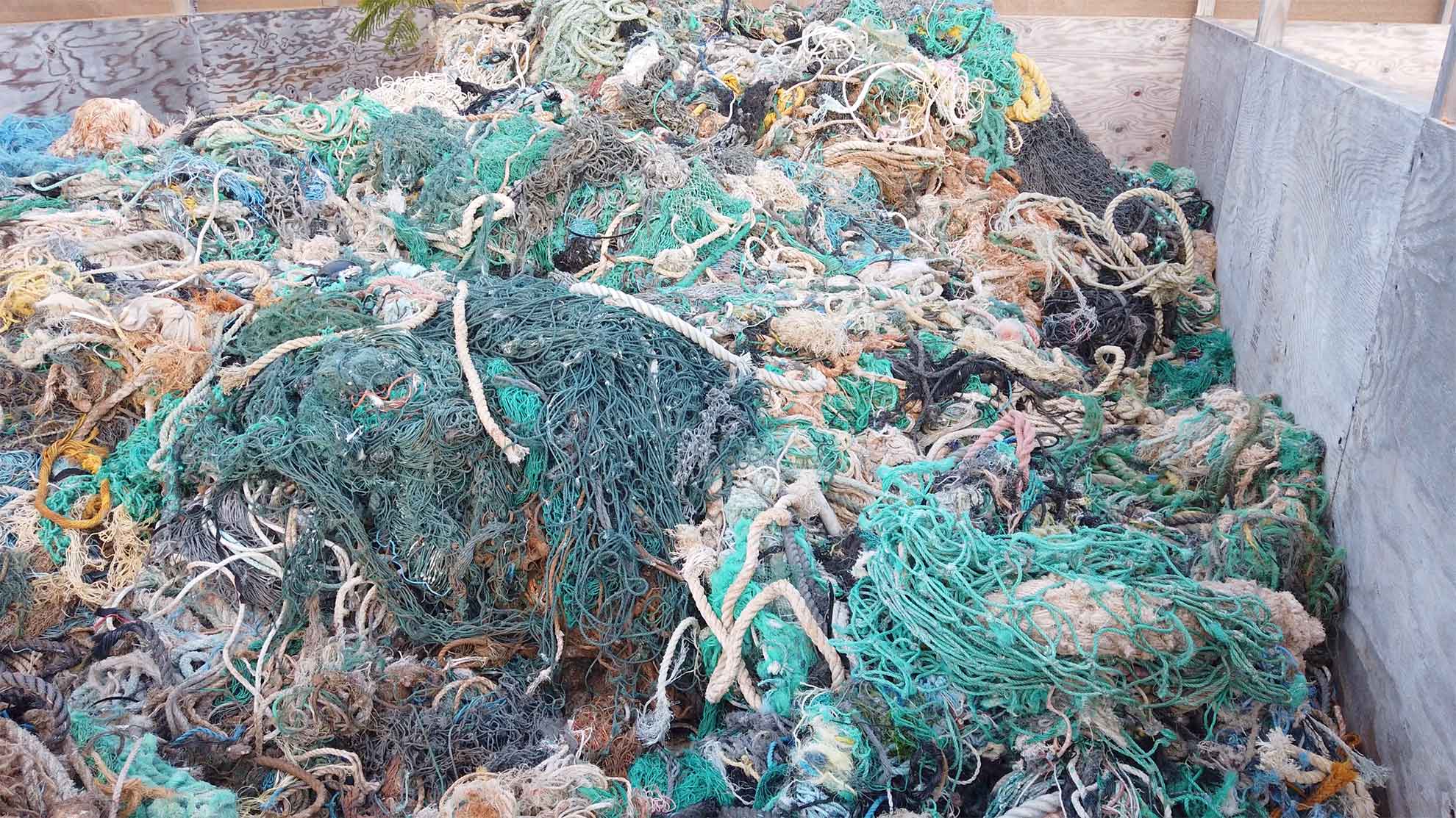
A collection of nets, ropes and lines collected from Kauai’s beaches and stored at the Surfrider Marine Debris Processing Center awaiting recycling.
Dr. Carl Berg as well as other key players in this project have expressed interest in obtaining a Blocker on the island which can facilitate a community run, closed loop cycle for plastic waste and marine debris.³ Local plastic waste, transformed into construction-grade building material, used for local projects– eliminating plastic waste pollution, creating jobs, and improving community infrastructure, all in one.
Moving forward
Thank you to Schmidt Marine Technology, Mayor Derek Kawakami, Island School, Surfrider Foundation – Kauai Chapter, Brower Construction, the construction companies, and the local Kauai community for supplying time, energy, resources, and support to the Athletic Pavilion project. It showed the potential of ByFusion, the power of partnership and contributed to the improvement of the Island School’s infrastructure while taking a step to combat local plastic waste problems.
ByFusion’s goal is to recycle 100 million tons of plastic by 2030. With the support of recycling facilities and communities across the globe, we know this can be accomplished. For coastal communities and island nations, we are eager to play a leading role in giving local leaders the ability to reduce ocean pollution and create construction materials.
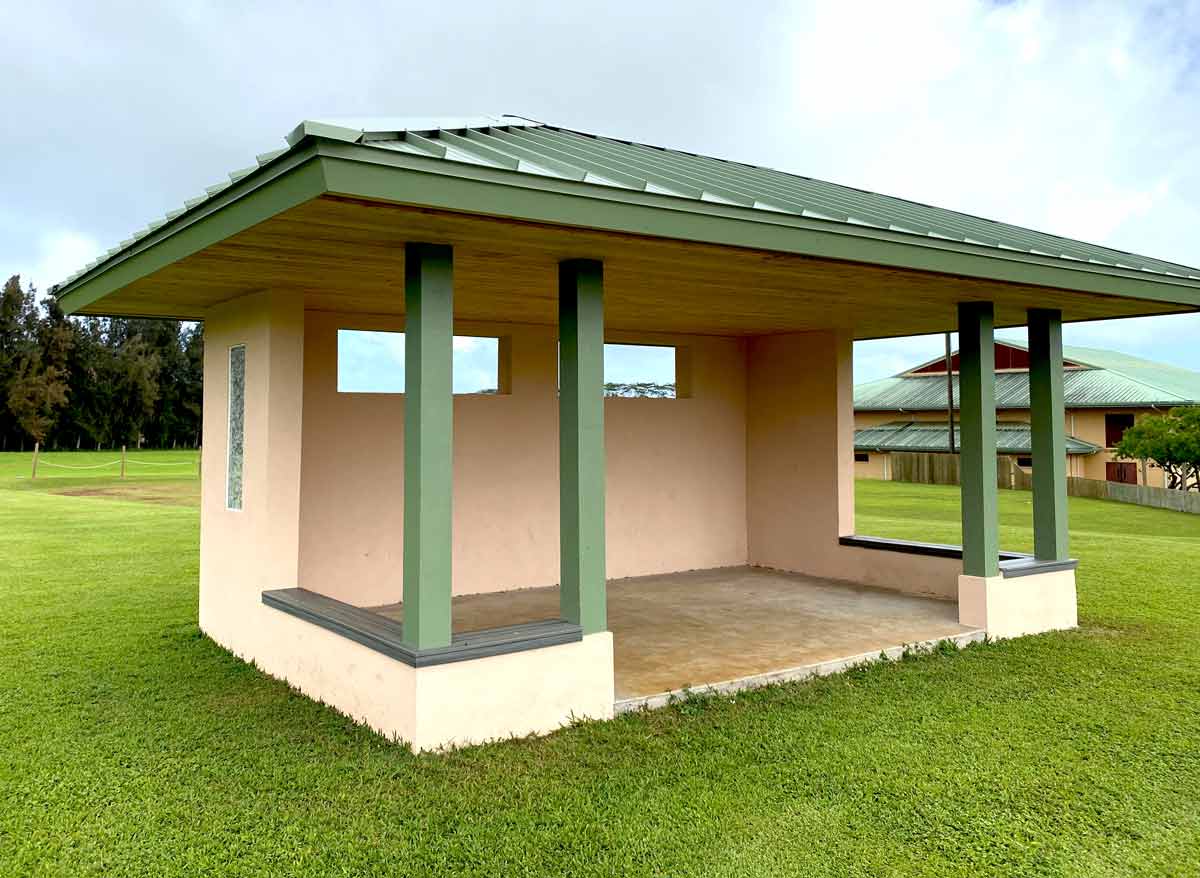
Finished athletic pavilion structure on the Island School field.
